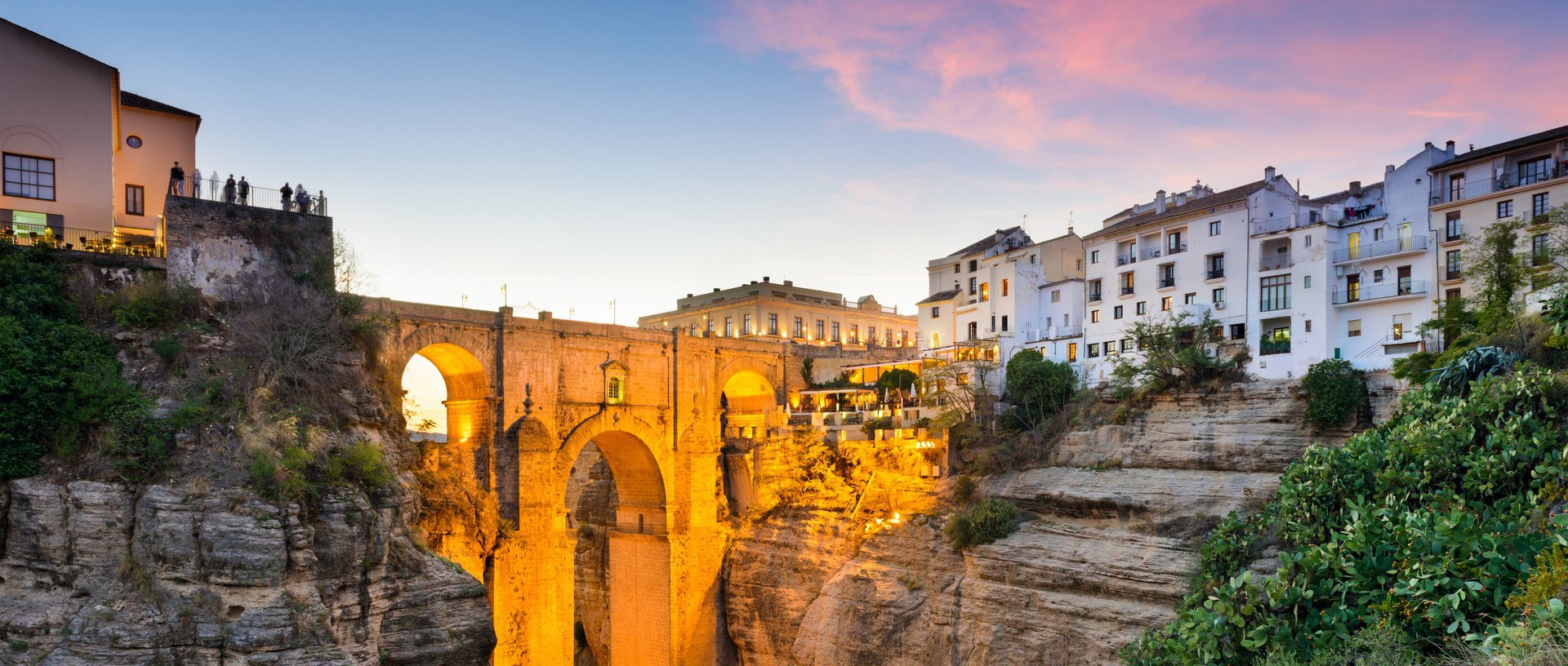About Ronda
What to do and how to Plan your trip to Ronda
A city on the Rocks
Ronda is a unique city. Built on a 100 metres high buttress of rock emerging from the high plains 40 kilometres north-west of Marbella the old and new towns are deeply divided by a canyon spanned by a bridge that took twenty-nine years to build. At a height of 750 metres above sea level Ronda has snow in winter and is scorchingly hot in summer. Spring and autumn are the best times to visit.
Culture
On a cultural note, Ronda has several museums, two in the old part of town are well worth a visit. The Municipal Museum is in the Mondragon Palace. The building itself is a wonderful example of Moorish architecture. The second is Museo Tematico Lara, again in the old town. This houses an eclectic private collection of cultural exhibits said to be the most important in Spain.
Nearby is the Museo de Bandolero, the Bandit Museum. This museum could only exist here. Basically, it is a celebration of the lives of various highwaymen, smugglers, thieves and vagabonds who lived in the area from the 16th Century right through to the mid 20th Century.
The museum manages to portray these rogues as a romantic, chivalrous cross between Robin Hood and Al Capone. The museums’ serious message is reserved for two small rooms right at the back. Here there is a brief history, almost a footnote, of the Guardia who were originally established to wipe out these bandits. And they did. Or did they? Maybe the survivors just moved to the Costa del Sol.
Although bullfighting is now pretty much non-pc throughout Spain Ronda is still proud of its heritage. The museum within the bullring is well worth a visit if only to view the elaborate, ornate, richly decorated and impossibly tight costumes worn by the matadors. The art of bullfighting in Ronda originated in an unusual manner. In 1572, Philip II founded the Real Maestranza de Caballeria de Ronda. Its purpose was to provide horsemen for the defence of the area. Part of the training involved pitting bulls against horsemen. The training also provided entertainment for the local population.
In the El Mercadillo area are dozens of restaurants and tapas bars that all welcome you. Ronda is famous for its Rabo de Torro (Oxtail Stew), on the menu everywhere. It is also famous for its range of tapas. Many places offer you a selection for a fixed price but the more adventurous can choose what they want from the bar. For the best value go in the establishments crowded with Spanish. Hnos. Macias on the street opposite the bullring is recommended. Either way, you will not go hungry or break the bank.
Where to eat in Ronda
No experiences match your criteria
Things to do in Ronda
No experiences match your criteria
Holiday property rentals in Ronda
To view the beautiful holiday property rentals we have available in and around Sotogrande, please click the below button.


